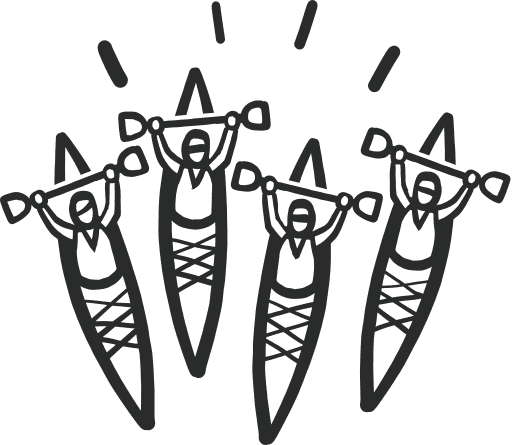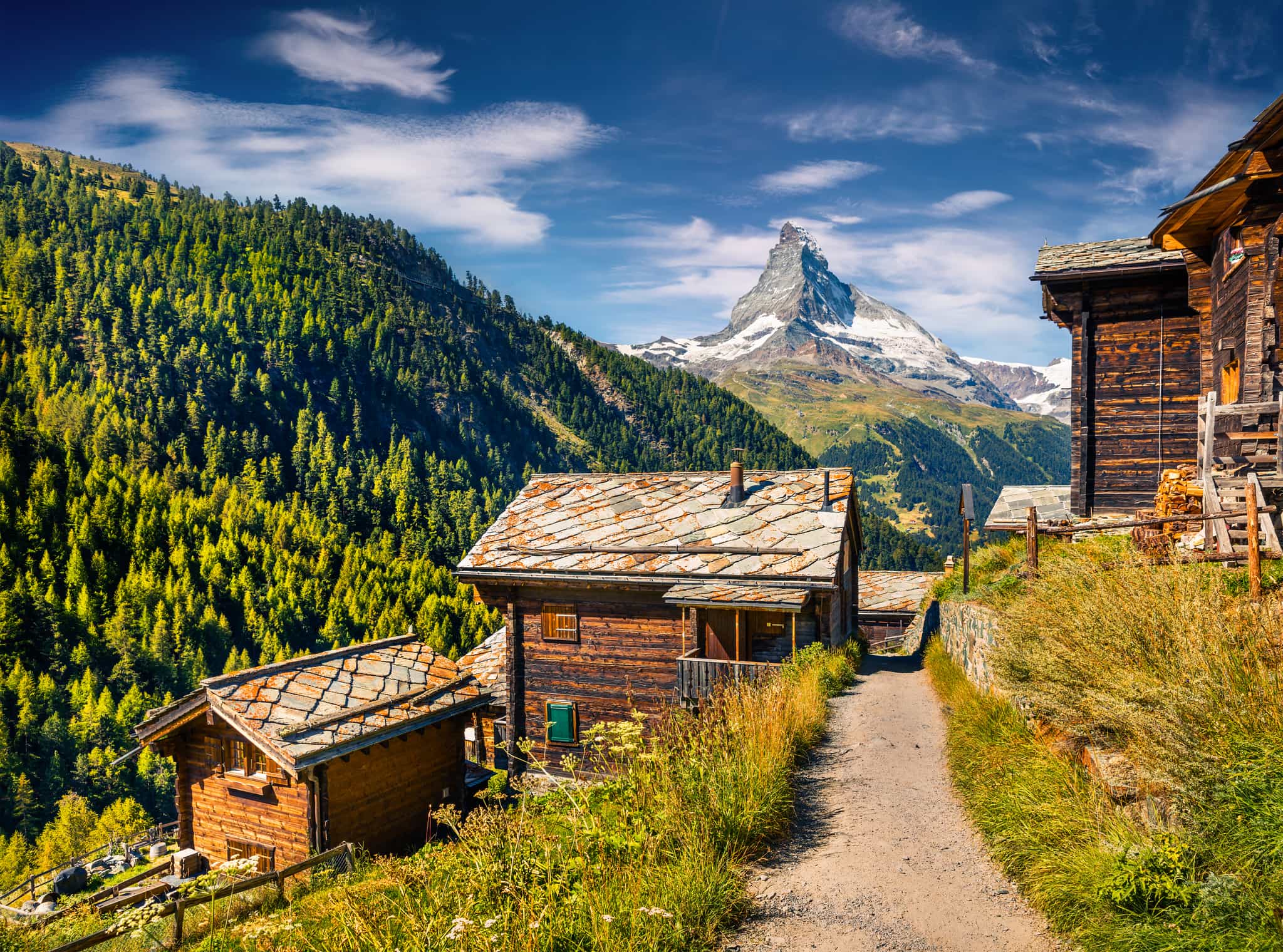
Trek the Haute Route from Chamonix to Zermatt
Follow a spectacular trail, hut-to-hut through the heart of the Alps
What's Included?
Activities & Certified Guides
All itinerary activities with expert, local, English-speaking IML-certified guidesGuesthouse & Mountain hut
9 nights in guesthouses, B&Bs and mountain hutsMeals
All breakfasts, lunches, and dinnersEquipment
Pillows and blankets are provided at the refugesSmall Like-minded Groups
Solo-friendly by design, join our small n’ sociable groups of up to 10 like-minded, active and outdoorsy people…
…
What's it like?






























Take on one of Europe’s toughest and most prestigious long-distance trails
Experience the remote wonders of the Alps as you trek to epic viewpoints and traditional mountain villages
Get a picture-perfect view of the Matterhorn, one of the most iconic mountains on the continent
Short on time? Check out our alternative adventure, Trek the Haute Route in a Week
Key Information
Day 1
Trek to Trient
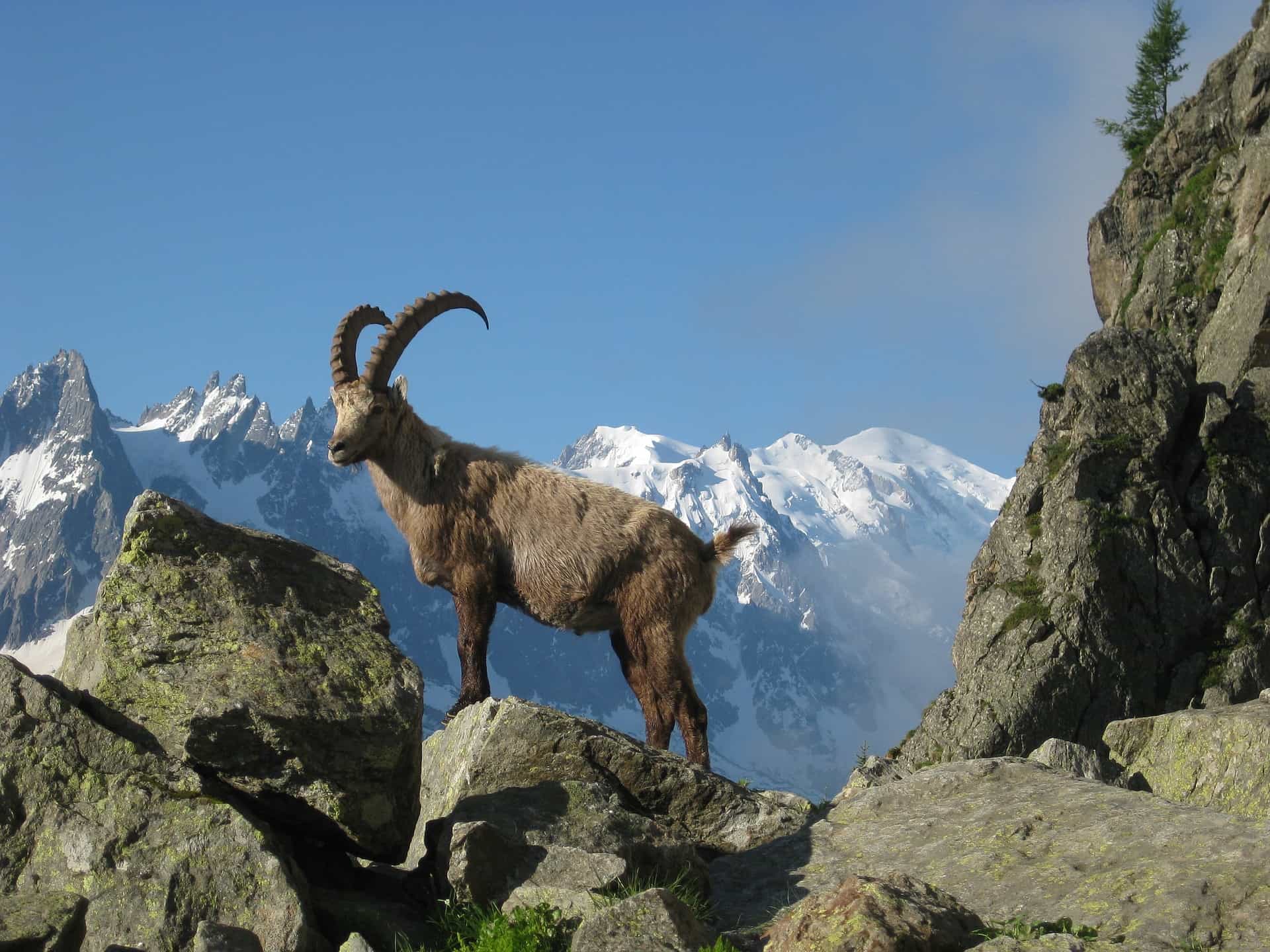
Hiking
Make your way to the Chamonix Sud main bus terminal to meet your host at 08:30. From there, you'll head to Argentière to start the hike, beginning with a gradual ascent to the summit of L'Aiguillette des Posettes above the Chamonix Valley. (You can read more about this iconic route in our guide to hiking the Walker’s Haute Route from Chamonix to Zermatt.) Take in the epic views of the mighty Mont Blanc in the distance, then turn around and head towards the Col de Balme, which straddles the French–Swiss border. After crossing the col, you’ll descend to the picturesque village of Trient for a hearty meal and a well-earned night's rest in an Alpine mountain refuge.
Day 2
The wild pass of Fenêtre d'Arpette
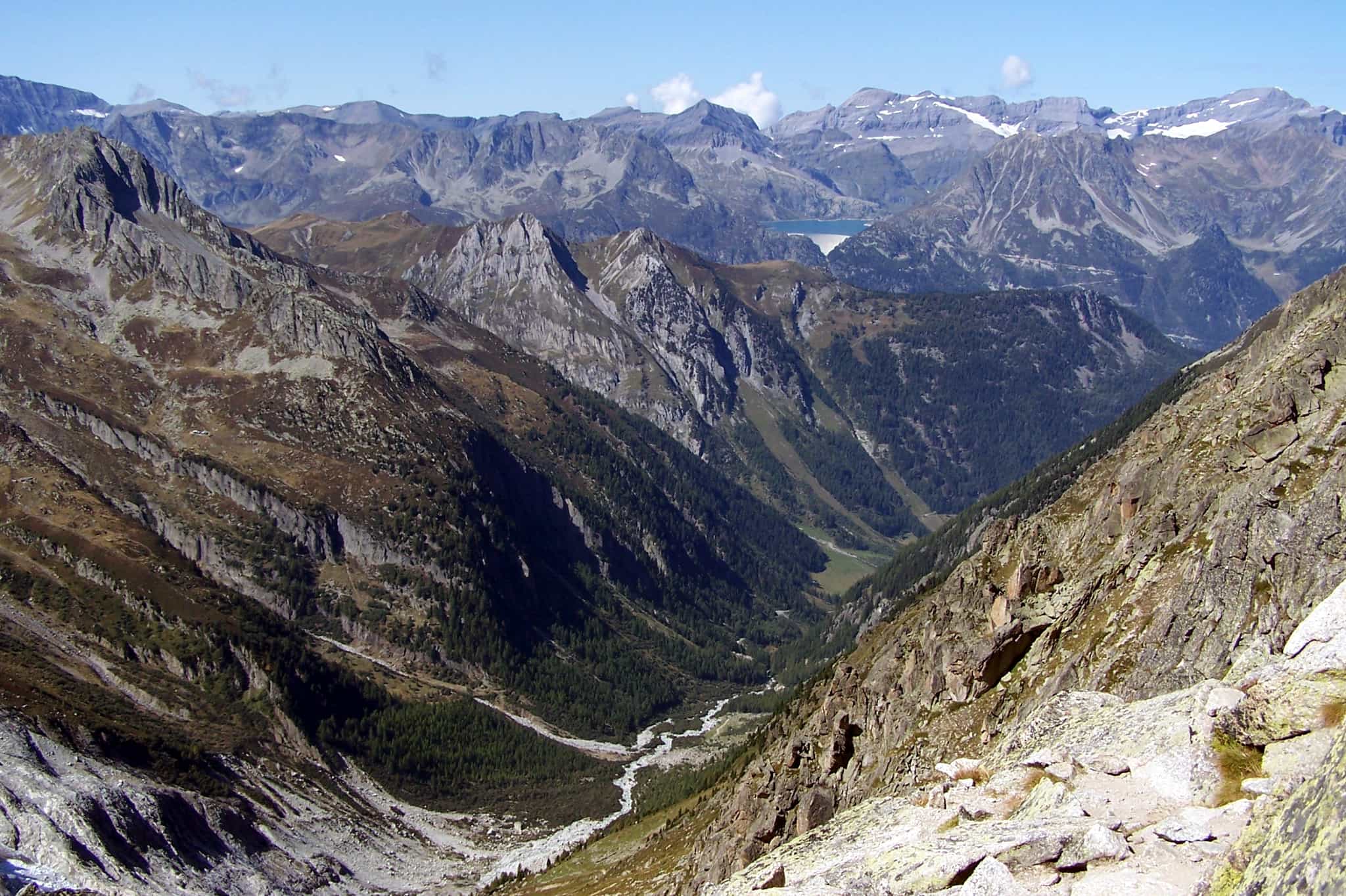
Hiking
Follow a rugged trail and scramble over the boulder-strewn terrain to reach the Fenêtre d'Arpette, a wild and narrow mountain pass known for its untouched beauty - eyes peeled for a glimpse of the Matterhorn. Cross through the steep Arpette Valley and spend the night in the small Swiss mountain resort of Champex-lac.
Day 3
Col de Prafleuri
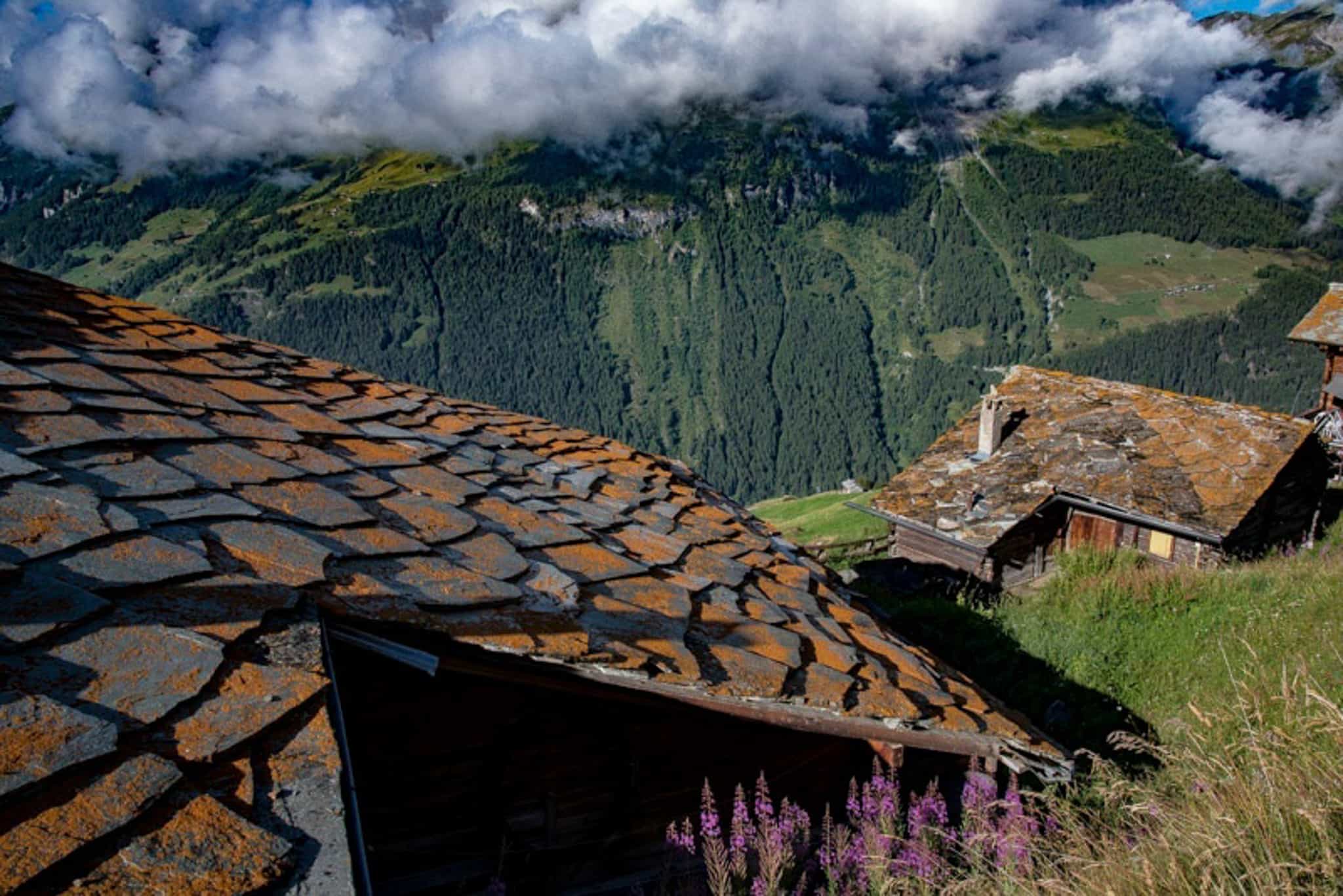
Hiking
Transfer to Verbier to catch the cable car to La Chaux, picking up a rugged trail through the remote peaks. After a couple of climbs separated by the crystal clear Petit Mont Fort Lake, reach Col de Louvie in time for lunch. Descend steeply and cross the otherworldly rocks of the 'Grand Desert', gradually ascending to Col de Prafleuri. Spot tonight's cosy hut (Cabane de Prafleuri) on the Letio d’Allèves Plateau below, reached via a short but steep technical descent.
Day 4
Lac des Dix and Col de Reidmatten
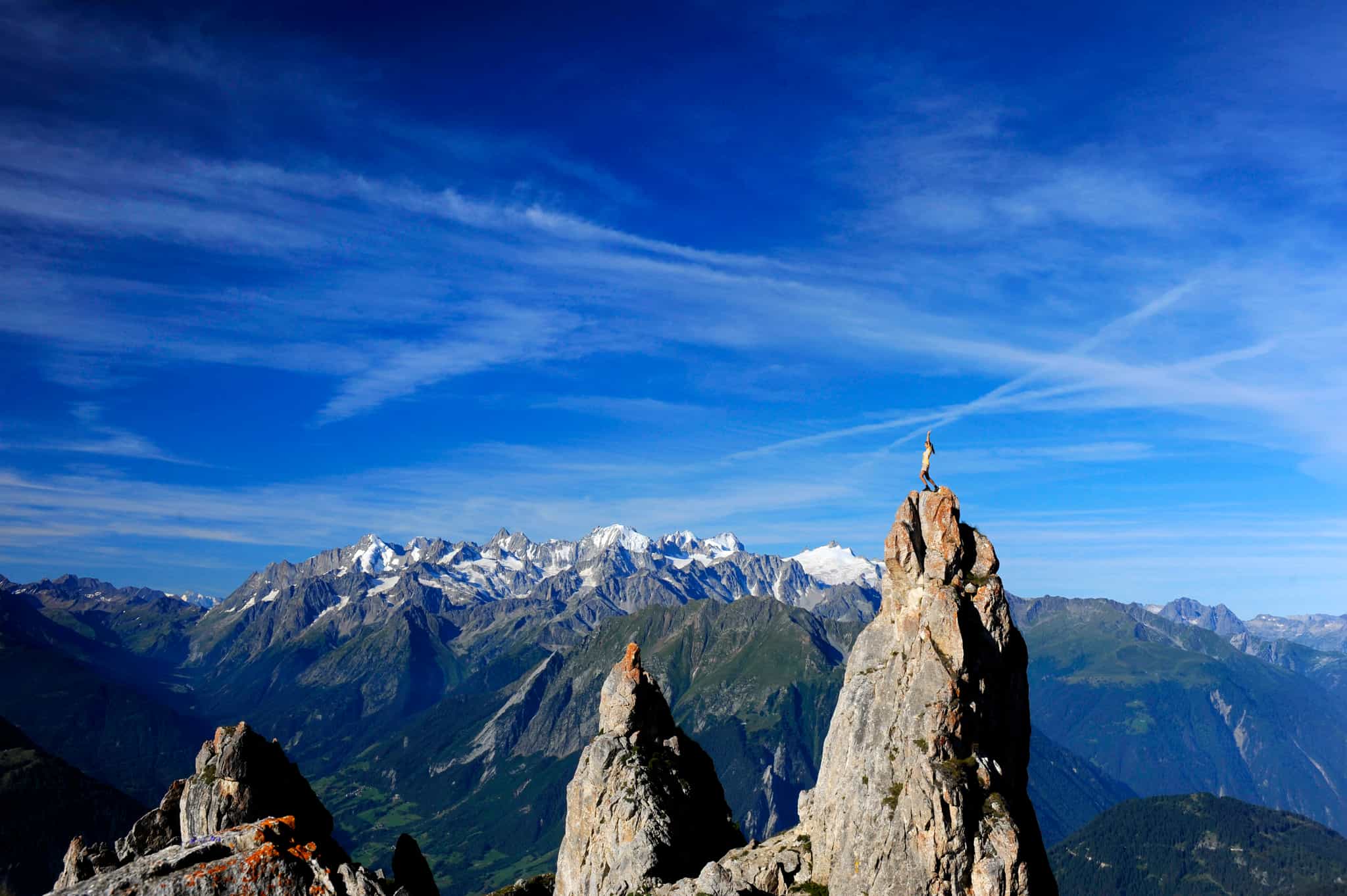
Hiking
Hike to Col des Roux for views over the impressive Grand Dixence Dam and descend to follow an easy trail along the lakeshore. Climb to the lower end of the Dix Glacier, where the final section demands careful navigation over the steep gradient and rocky ground to the Col de Reidmatten. Follow a gentle trail from the pass down to Arolla. Time to rest up and recover at a nice mountain guesthouse.
Day 5
Lac Bleu
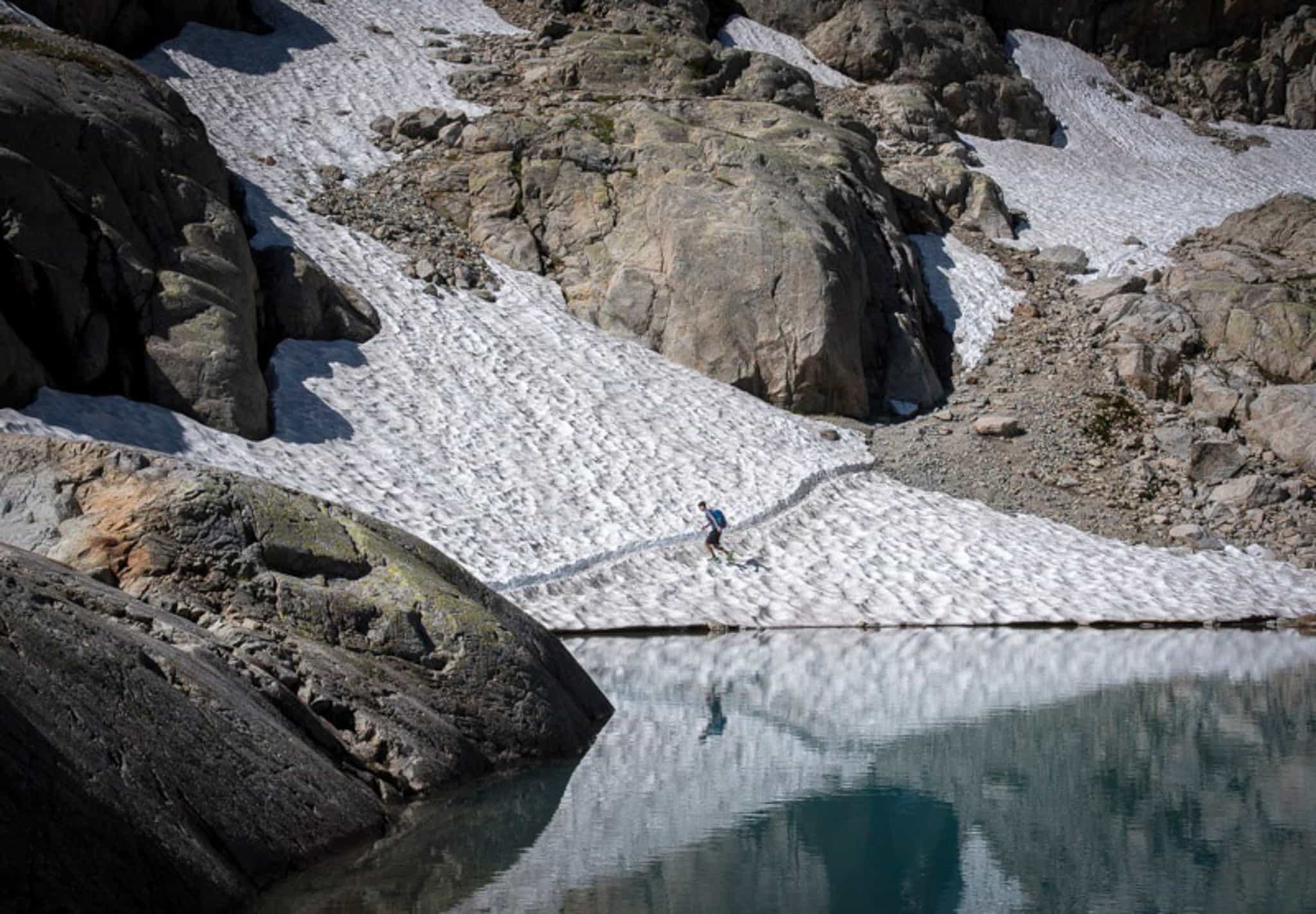
Hiking
An easier day to mark the halfway point. After a leisurely start and a relatively gentle forest stroll, there's a chance for the brave to take a dip in the pristine mountain waters of Lac Bleu. Continue through villages and farmland, along tracks of the famous black cows (Reines d’Hérens), passing through Les Haudéres to reach La Sage in the early afternoon.
Day 6
The big 4000s
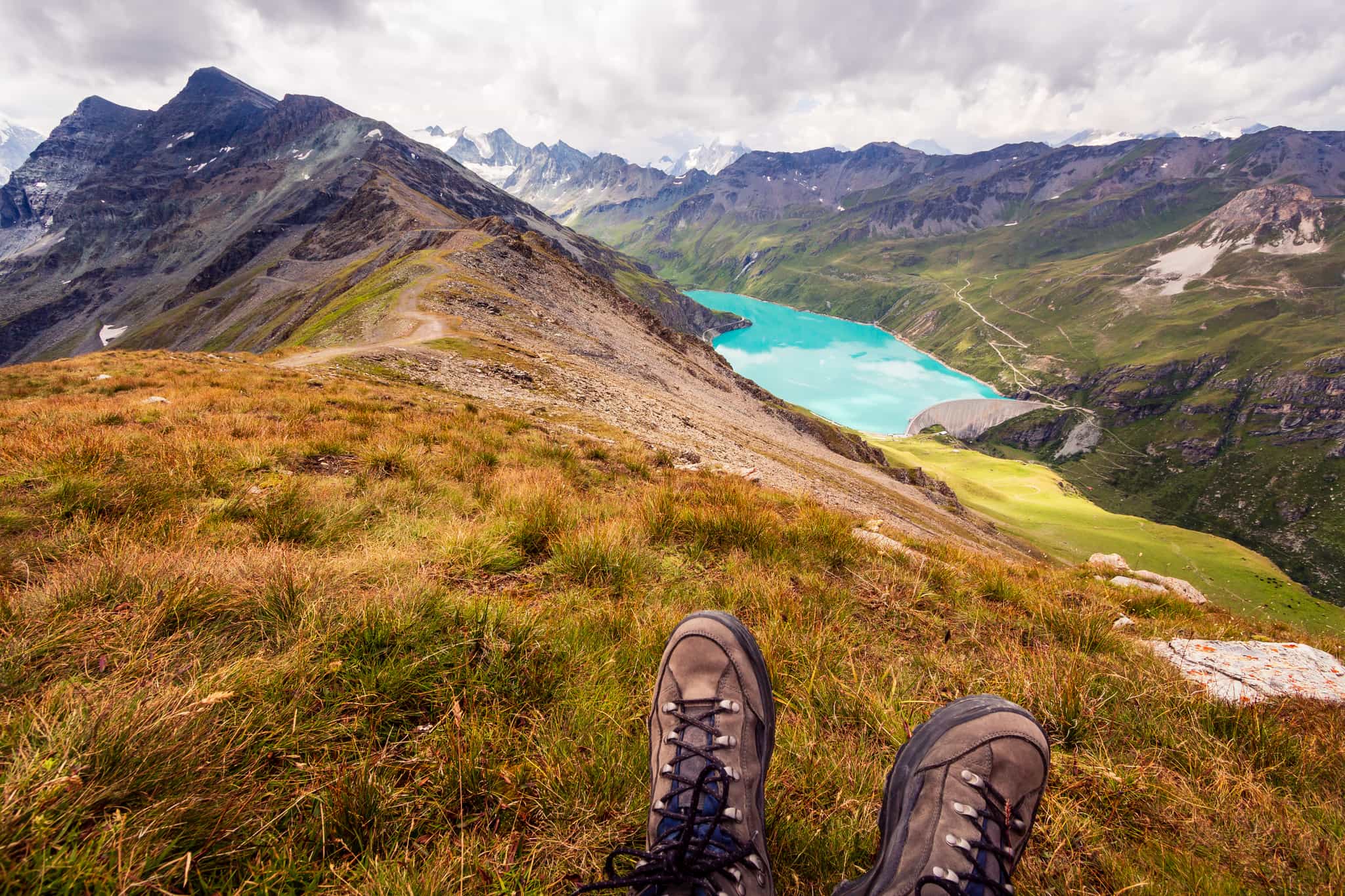
Hiking
Set off on one of the toughest days so far as you hike toward the high point at Col de Torrent, with spectacular views over the 4000m peaks of the Alps. Descend to the Val de Moiry, passing the Lac de Moiry, where you'll stop for a well-deserved rest before continuing down the track to the Col de Sorebois. From there, take the gondola down to Zinal, where you’ll lay your head for the night.
Day 7
Col de Forcletta
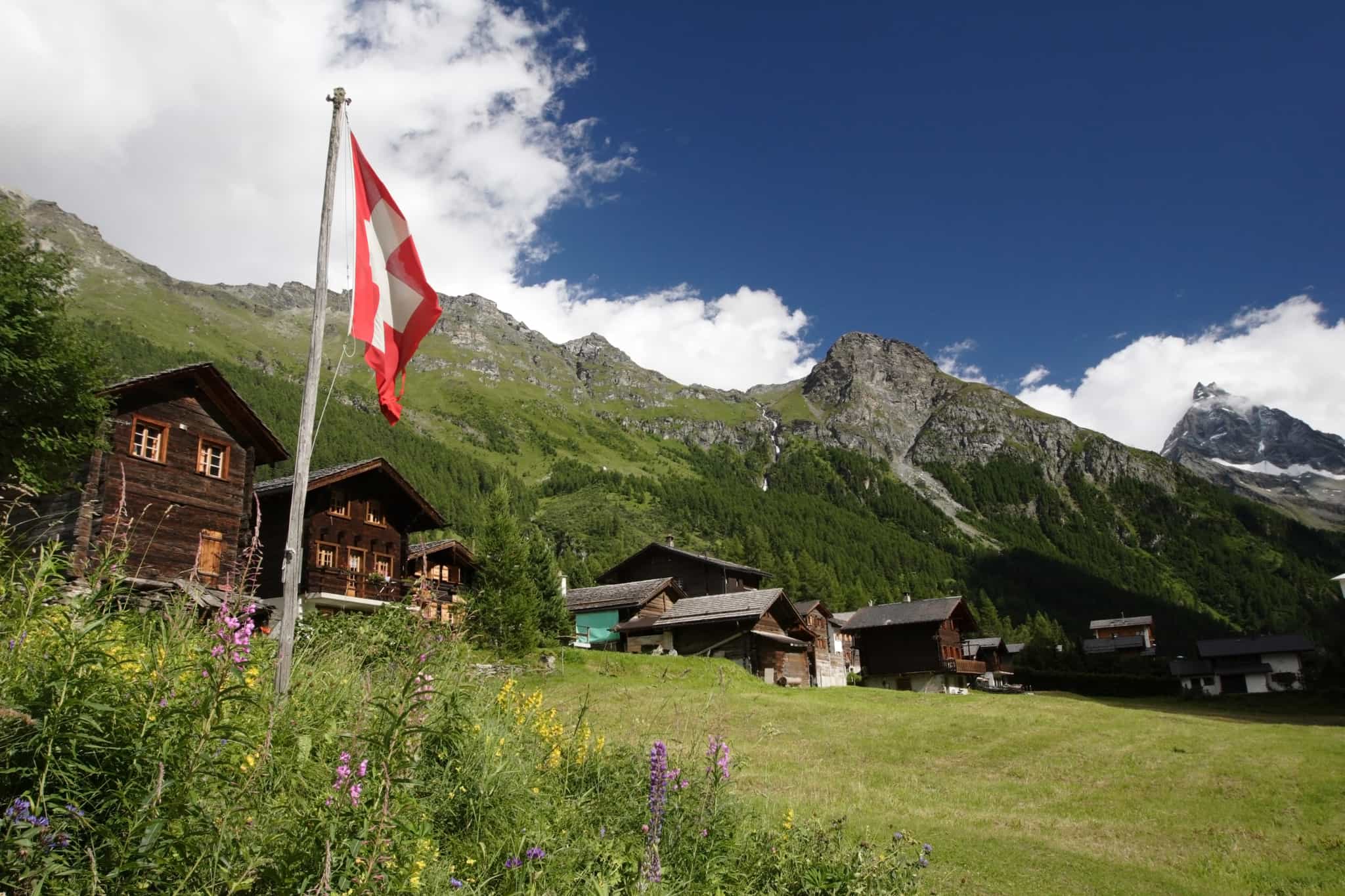
Hiking
Meander through farms and meadows on a gentle trail overlooking neighbouring villages, before ascending the Forcletta Pass (the boundary between the French-speaking and the Swiss-German speaking parts of this area). Descend into the rural Meid-Valley on an isolated path which leads to a guesthouse in the village of Gruben.
Day 8
The Augstbord Pass
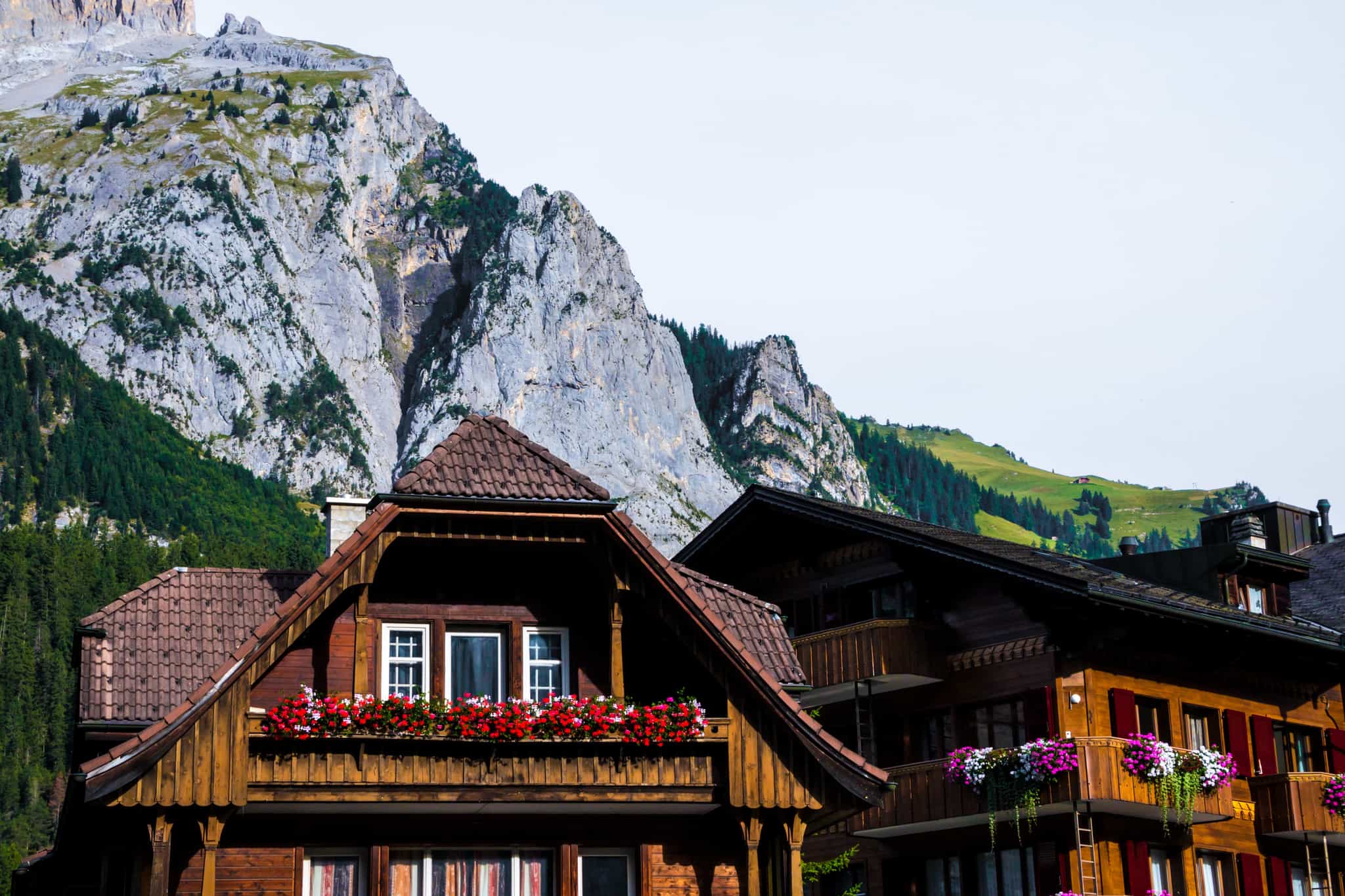
Hiking
Time for one of the most epic sections of the entire trip as you enter the Matterhorn Valley. Climb through sparse forest to the Augstbord Pass before descending into the Augstbordtal. Traverse a rugged trail built into a steep slope to the Jungtal. Ride the cable car from Jungu to reach the quintessentially Alpine village of St. Niklaus, where you'll check into a warm and cosy guesthouse.
Day 9
Hike the Europaweg
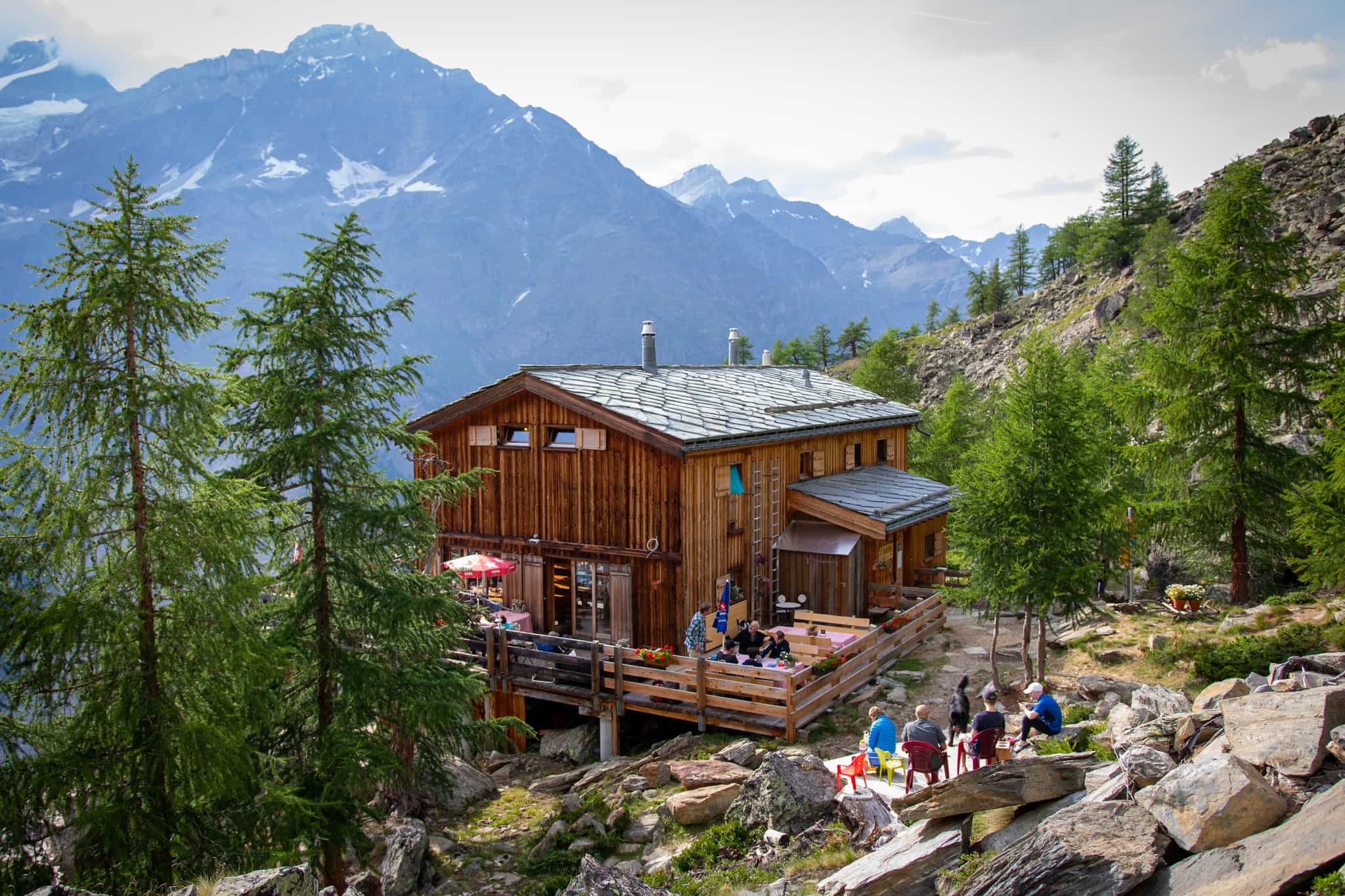
Hiking
Hike through traditional Swiss hamlets to Randa, then traverse high above the Matterhorn Valley on the switchbacks of the famous Europaweg trail. Continue on for a short distance to reach the Europahütte mountain refuge, known for its incredible views of the Matterhorn Valley and of the Weisshorn.
Day 10
Trek to Zermatt

Hiking
Cross the world's longest suspension bridge (the Charles Kuonen Bridge), which spans almost 500m. Spot famous peaks such as the Weisshorn, the Dom and the unmistakable Matterhorn as you continue along the Europaweg and trek right into your final destination of the trek, the lovely mountain village of Zermatt. Celebrate - you’ve earned it.
The Area
Logistics
Starts
Chamonix Sud Bus Terminal, France
08:30 on Day 1
Ends
Zermatt Train Station, Switzerland
17:00 on Day 10
Transfers
Make your way to Chamonix Sud Bus Terminal for 08:30 on Day 1. You should arrive in Chamonix any time the day before the start date and book a hotel of your choice.
The trip ends at around 17:00 on Day 10 in Zermatt, Switzerland. Air travellers can take the train to the airport directly from Zermatt. We recommend you stay the night in Zermatt to celebrate the end of your trek (a completely car free town) or you can head straight to the airport for a late flight: it takes 3.5 hours to reach Zurich-Kloten and 4 hours to reach Geneva.
Travel options
You can fly into Geneva Airport (GVA) which is approximately one hour from Chamonix. Alternatively, you can fly into Milan Airport (LIN) or Zurich Airport (ZRH) and travel on to Chamonix from there.
For those who wish to avoid flying, Chamonix is also accessible by train via the St. Gervais-les-Bains (Le Fayet) station at the base of the valley which connects to Chamonix Mont Blanc train station. For example, take the Eurostar from London to Paris and then connect to a number of direct lines or an overnight sleeper train from Paris to St. Gervais-les-Bains, then on to Chamonix Mont Blanc station.
You can also travel to Geneva by various train routes from other parts of Europe and travel on to Chamonix from there by bus. Geneva bus station is a 5 minute walk or short taxi ride from the central train station. There are various bus services from Geneva bus station to Chamonix, the quickest option taking 1 hour and 8 minutes. Your return leg at the end of the trip can begin at Zermatt train station for various onward train travel routes throughout Europe.
For those wanting to arrive a day early or extend their trip - your host is happy to help arrange pre or post trip accommodation on your behalf, with the price and style depending on availability and your budget. Your host will also be able to recommend an airport transfer company to get you to Chamonix.
Day 1
Breakfast
Lunch
Dinner
Day 2
Breakfast
Lunch
Dinner
Day 3
Breakfast
Lunch
Dinner
Day 4 – Day 8
Breakfast
Lunch
Dinner
Day 9
Breakfast
Lunch
Dinner
Day 10
Breakfast
Lunch
Dinner
What is the food like?
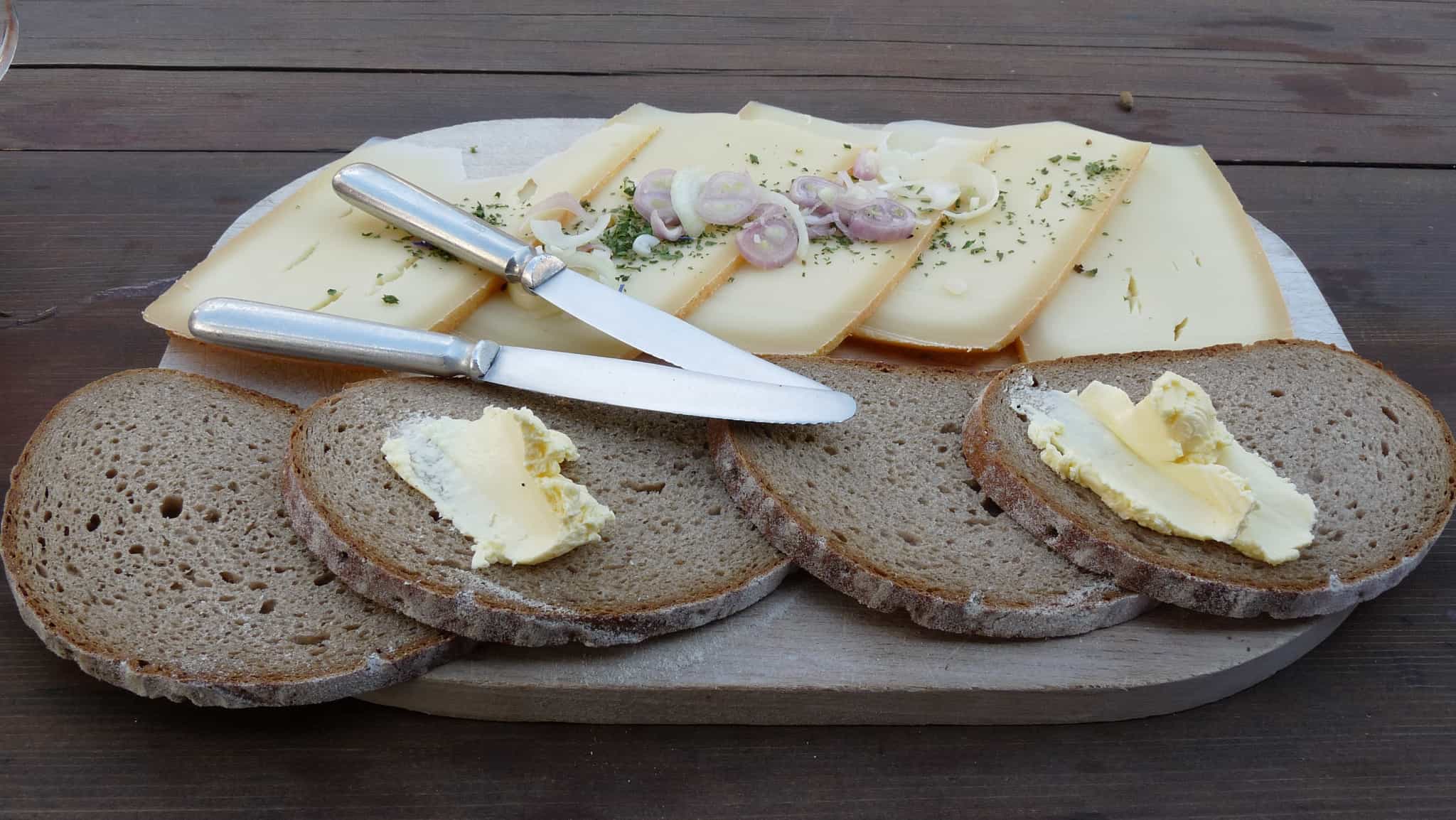
Breakfasts and dinners will be served at the refuges. Breakfasts always include coffee, bread, jam and butter. Depending on the refuge, they may also include orange juice, cereal, yoghurt, fruit, cheese and meats. Dinners are hearty and served in large portions – just what a hungry hiker needs! Typical meals include a soup starter, a main course of meat and veggies with a side of grains or pasta, and a dessert like vanilla pudding or creme brûlée. Picnic lunches will be provided each day, featuring a large main item like a sandwich or wrap, a salad, and a selection of fruit, muesli bars, chocolate, nuts, etc.
Vegetarian, vegan and most other dietary requirements (including gluten-free) can be catered for with advanced notice. Just let your host know when booking. Whilst dietary needs are sent to each refuge with the group reservations, please consider that the mountain refuges will have a limited range of choice to offer guests due to their remote locations. People with very specific dietary requirements typically choose to also bring some of their own snacks with them to ensure they have sufficient fuel for hiking up and down the beautiful mountain trails.
What is the accommodation like?

The Alps
For the most part, you'll stay in simple guesthouses and B&Bs in twin-share rooms, except for in a couple of locations (Europahütte, Cabane du Prafleuri and occasionally in Trient) where you'll stay in remote mountain huts in multi-share dormitories.
Each accommodation is unique but you can usually expect it to be simple, clean and comfortable. In the mountain huts, groups typically sleep in mixed dormitory rooms of up to 20 persons, usually in bunk or single beds. They feature hot showers, running water, pillows and blankets, and a bar serving cold drinks. Most refuges also have outlets for charging your electronics, and some even have WiFi. Some refuges are more modern in style, others have a more traditional heritage, most are busy throughout the hiking season; it's the refuge's location and its remoteness that largely decides what comforts and conveniences are available. It's best to keep your expectations simple and enjoy the time on the trail to unplug from everyday life.
Upgrades
Unfortunately, single room upgrades aren't available on this trip as some of the hotels are very small and have a limited number of rooms.
This trip has been rated as Tough
The Haute Route is rated as more difficult than the comparable 10 day Tour du Mont Blanc: Full Circuit as the terrain is more rugged and less frequently travelled. In places the trail is technical and steep, and as such is consider the next step up from the TMB, making it most suitable for experienced hikers. You'll need to be able to hike 15–20km on mountain trails, with as much as 1000m+ of elevation gain and descent each day, for multiple days in a row. Doing some practice hikes before the trip with your pack and boots is strongly recommended to help you prepare for this adventure!
What will I need to carry?
You will be carrying your own 30-50L pack between the refuges, with everything you need for the full trek. So don't over pack, a lighter pack will be more enjoyable, but also don't skip the essentials and risk getting caught out in bad weather. It's a good idea to do some hiking before the trip so you are comfortable with the gear you plan to bring on the trek. Check out our kit list section for the basics to consider putting in your pack.
Summer in the Alps is generally warm and fair, but the weather can change very quickly in the high mountains, bringing cold rain and wind. Average temperatures range from 6-26 °C. It rains roughly half of the days each month, but storms generally pass through quickly. Even in the peak of summer you can have very mixed conditions, especially when climbing over the high mountain passes above 2000m. Heatwaves have also been a feature of recent European summers. Our kit list is intended to guide you on what to pack for this trip.








The Haute Route Trek was
The Haute Route Trek was an unforgettable adventure, and I’m happy to say that it wasn’t as tough as imagined. With a little training and preparation, it’s absolutely manageable. The key is to pack light, as the challenge really lies in carrying your own bag through the rugged terrain. If you’re ready for that, the journey is incredibly rewarding.
The group I was with was unique—full of diverse personalities but combined with shared enthusiasm, which made the experience even more fun.
A huge shoutout to Allesandra, who did everything in her power to ensure we stayed safe and we had an amazing time. Her dedication and care as well as her knowledge and passion for the mountains truly made the trek stand out.
One of the highlights was taking a dip in a mountain lake—invigorating and surreal, surrounded by towering peaks and crisp alpine air. It was the perfect way to refresh after some long day’s hike.
But perhaps the most grounding moments came when we crossed the so-called "grand desert" section of the trek. The silence, the serenity, and the vast open landscapes made you feel truly at peace, with nothing but nature around you. It was a rare, almost meditative experience.
All in all, the Haute Route is an experience that demands preparation but rewards you with breathtaking scenery, camaraderie, and moments of pure tranquility.
Definitely worth the journey!










Amazing and Challenging Trek Through the Alps
A well-organized and efficient trek through the beautiful French and Swiss Alps. Don't underestimate this hike - the daily elevation gain/loss, altitude, terrain, and pack weight make it a challenging undertaking, but with proper training and the right attitude, it is definitely manageable. The scenery is truly amazing and every day is different yet equally majestic.
The food and accommodation were all better than expected and the group was fantastic. Our guide, Oli, made sure everyone was well looked after and did a wonderful job managing the logistics. Highly recommend!





Loved it!
I loved the Trek the Haute Route trip!
The scenery was spectacular, a total feast for the eyes, with varied landscapes across different days that would often leave me stood staring in wonder. The flora and fauna was wonderful - I absolutely loved the marmots.
Our guide was fantastic. Extremely knowledgable created a positive vibe and ensured we were all looked after.
The accommodation was better than I expected. Some nights spent in mountain huts that were basic but comfortable and other nights in hotels.
The trek was a challenge with solid hiking days but also allowed time to relax and chill. I was blessed with a great group of people to share the adventure with and amazing weather.
Prior to the trip commencing I had several queries, which Much Better Adventures 'My Trip' forum allowed me to message in and get the advice I needed to help prepare for the trip.
I would highly recommend this trip and look forward to booking further adventures in future with Much Better Adventures. Thank you so much for a wonderful experience!

A fantastic 10 days of
A fantastic 10 days of difficult but rewarding hiking with an expert guide and no logistical worries.




Amazing trip!
My wife and I enjoyed this trip. The views were amazing, everywhere you looked was picturesque. The fitness needed is legitimate. Uphill/downhill switchbacks were a challenge. Went in late June/early July. Heavier snow this winter impacted availability of some passes. Our guide Fernando was excellent. Knowledgable, patient and a lot of fun! Accomodations were a combonation of a couple really nice hotels and basic mountain huts. I was pleased with a dose of both. Food throughout was a variety for lunches and dinners, which was great. The breakfasts were good but typically yogurt, granolla, bread/jelly, etc. It never felt repetative however. Group we were with was excellent and a lot of fun. Highly recommend this trip.






An epic adventure!
What an amazing experience! We crossed remote mountain passes, traversed steep snow fields, bouldered, scrambled and river crossed our way across the Swiss Alps, safe in the hands of our incredible guide, Fernando. The Haute Route is no joke - it's challenging but Fernando (and the team behind the scenes) made the experience one that was safe and unforgettable for all of the right reasons. As a group, we became a team, and bonded over our experience and the many, many laughs we shared. Accommodation and food was great - even the mountain hut experiences! I highly recommend this trek - just make sure you train for it!
Fernando the giude was excellent.... trip was excellent...views were excellent ..hiking was hard..challenging
A strenuous and technical traverse of the Swiss Alps, where you are rewarded with incredible scenery which changes every day. The highlights for me were the amazing views from the mountain pass each day. We were expertly led by our fantastic guide Alessandra. The food was great and the accommodation was of a high standard for a remote mountain trek, ranging from basic mountain huts to very comfortable hotels. The Haute Route is physically demanding so start training with the 10kg pack on your back! It is one of the tougher rated European long-distance hikes for a reason! I would advise you to bring (in no particular order) electrolyte tablets, hiking poles, earplugs, an eyemask and an adapter that works in both countries.
A superb multi-day hike, with absolutely stunning scenery literally every step of the way. Don't underestimate (but, at the same time, don't be put off by) the physical challenge: there's some long, arduous days on the trail but the pay-off is the sheer majesty, solitude and peace of the high-alpine landscape. Each day had something different in terms of terrain, exposure, distance and views which certainly kept things exciting. And although some days it felt most definitely like 'Type II' fun, that first view of the Matterhorn from the trail into Zermatt made it all worthwhile! Our guide Alessandra was great, setting a good pace and really looking out for the team's needs. The accommodation on the mountain and in the villages exceeded expectations; always a beer to celebrate the day's achievements and the food was really quite good (and not as many chicken curries as I was lead to believe from previous reviews!). If I could offer any tips, it'd be these: be brutal in your packing (every gram saved counts), use hiking poles (even if you don't normally), carry mostly Swiss Francs (very little time spent in the French Alps), take a Swiss plug adaptor (for the same reason), get some training in ahead of this epic hike and look after your feet whilst on it (take plenty of blister plasters - they were a life-saver for me). It's 100% recommended!
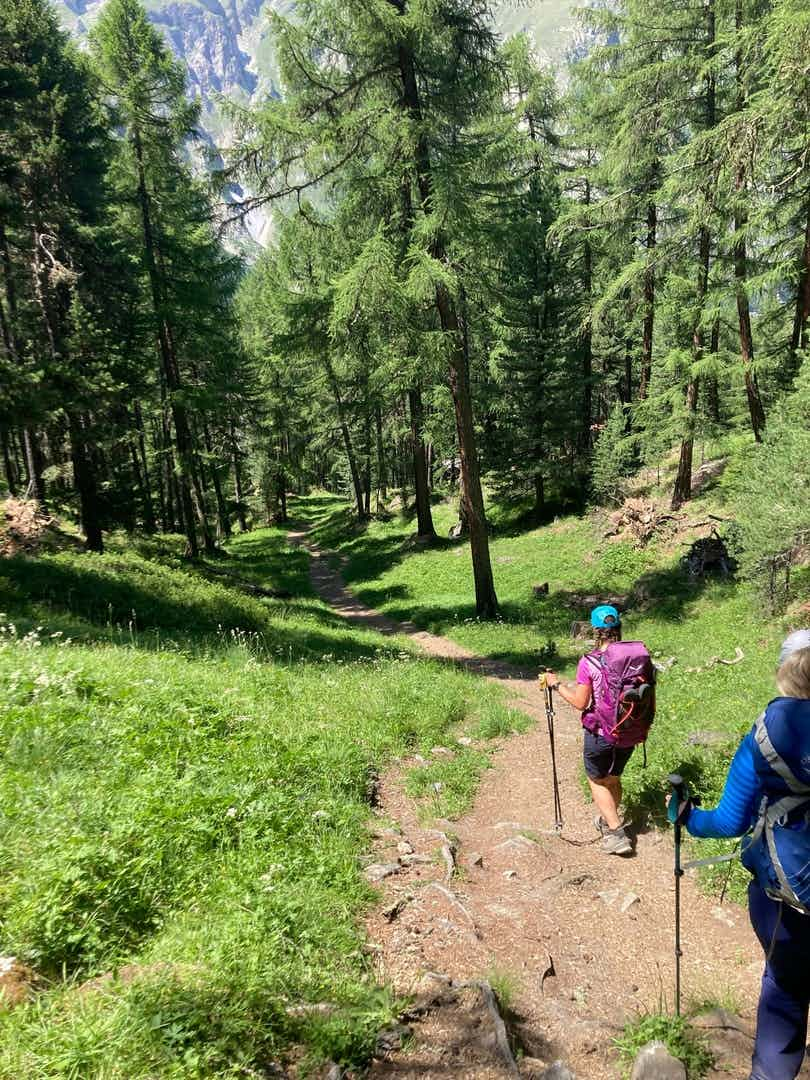
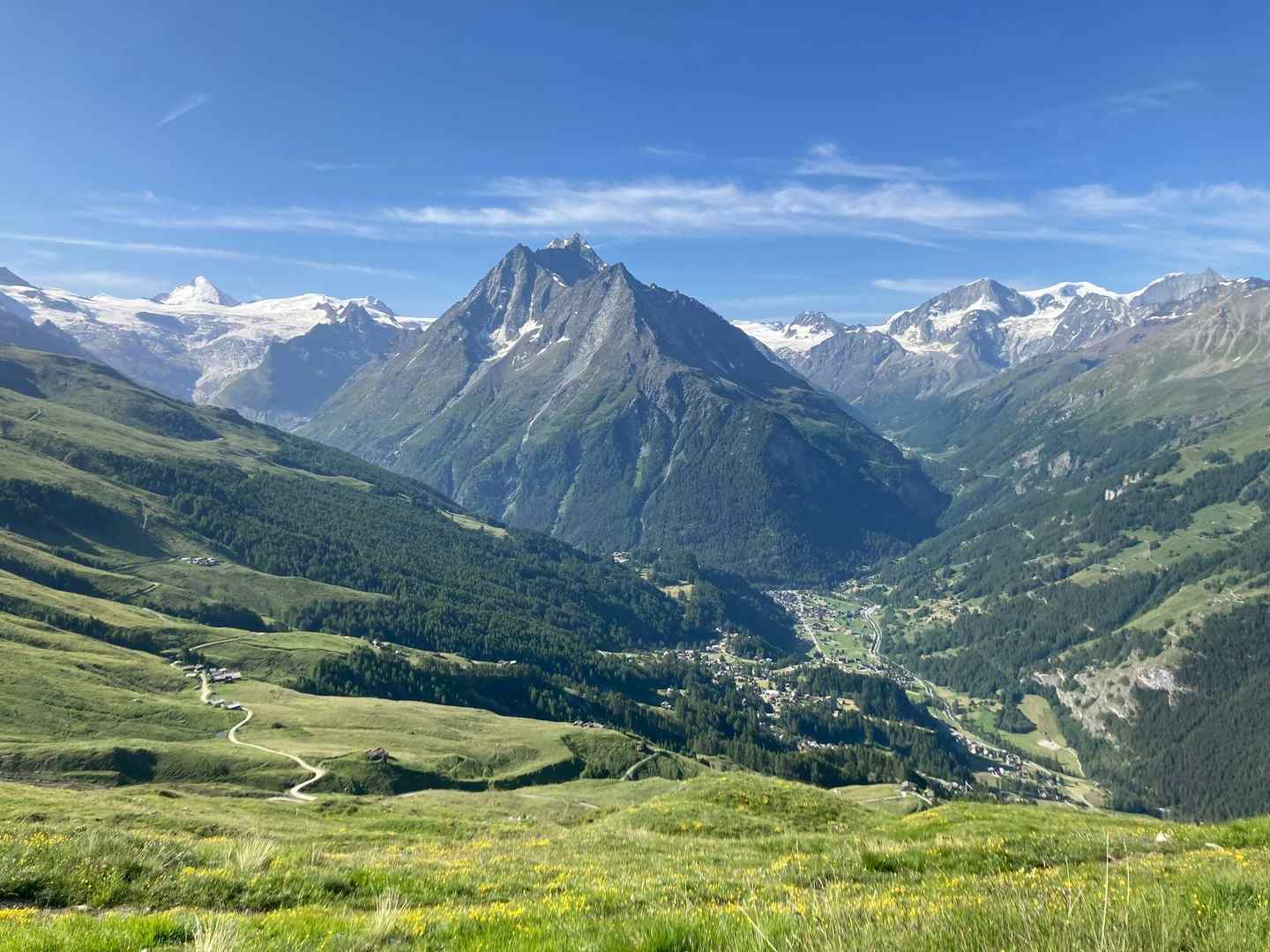
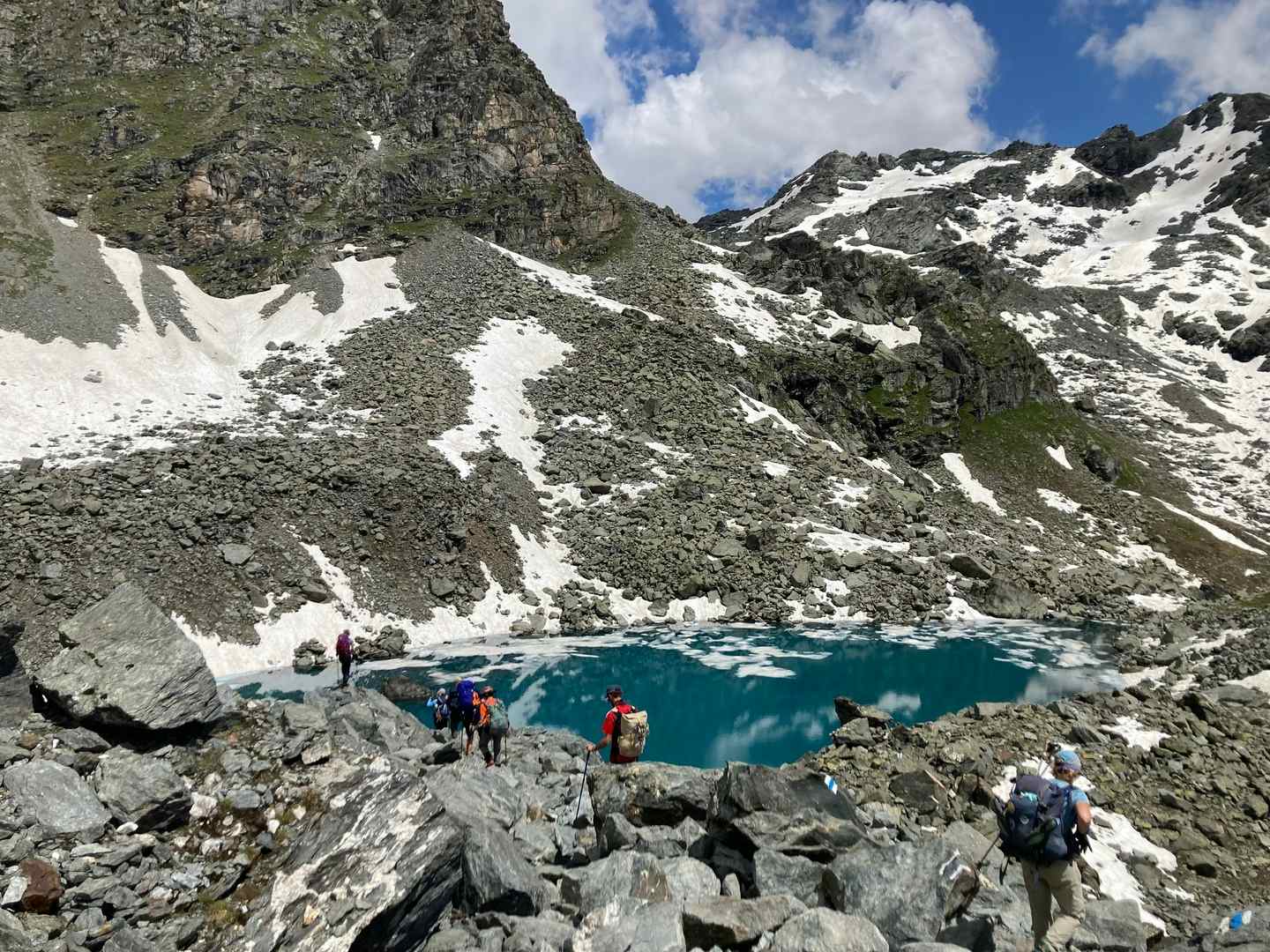
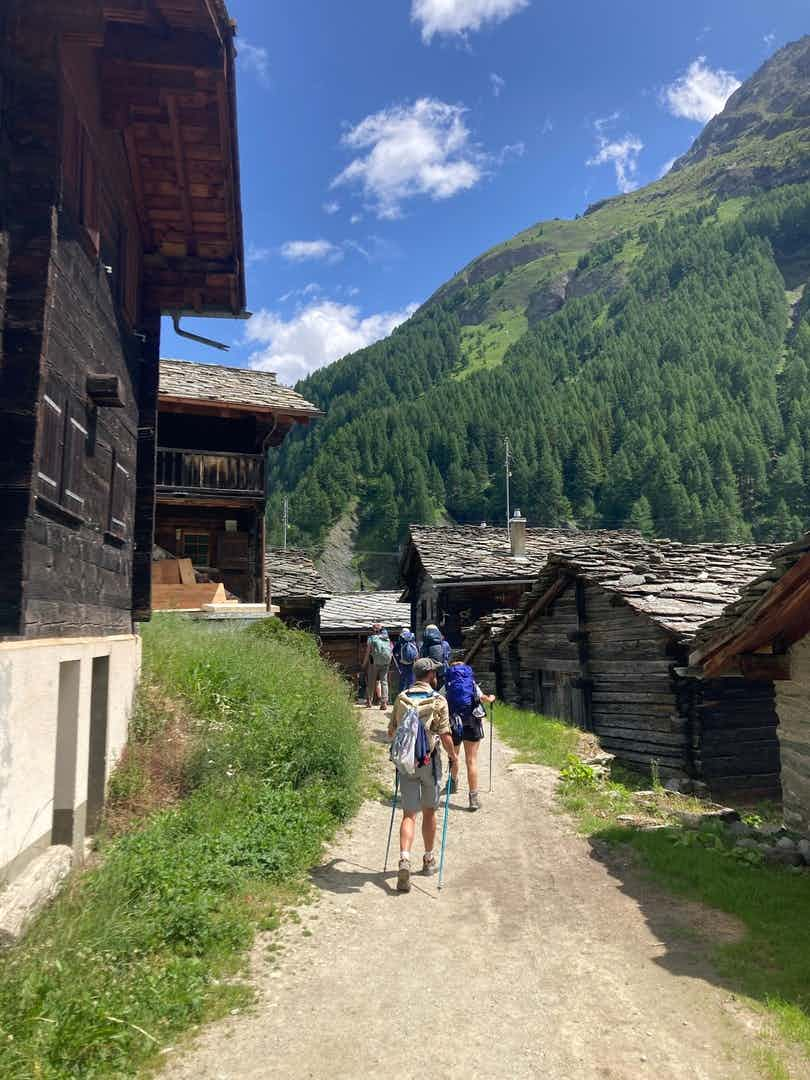
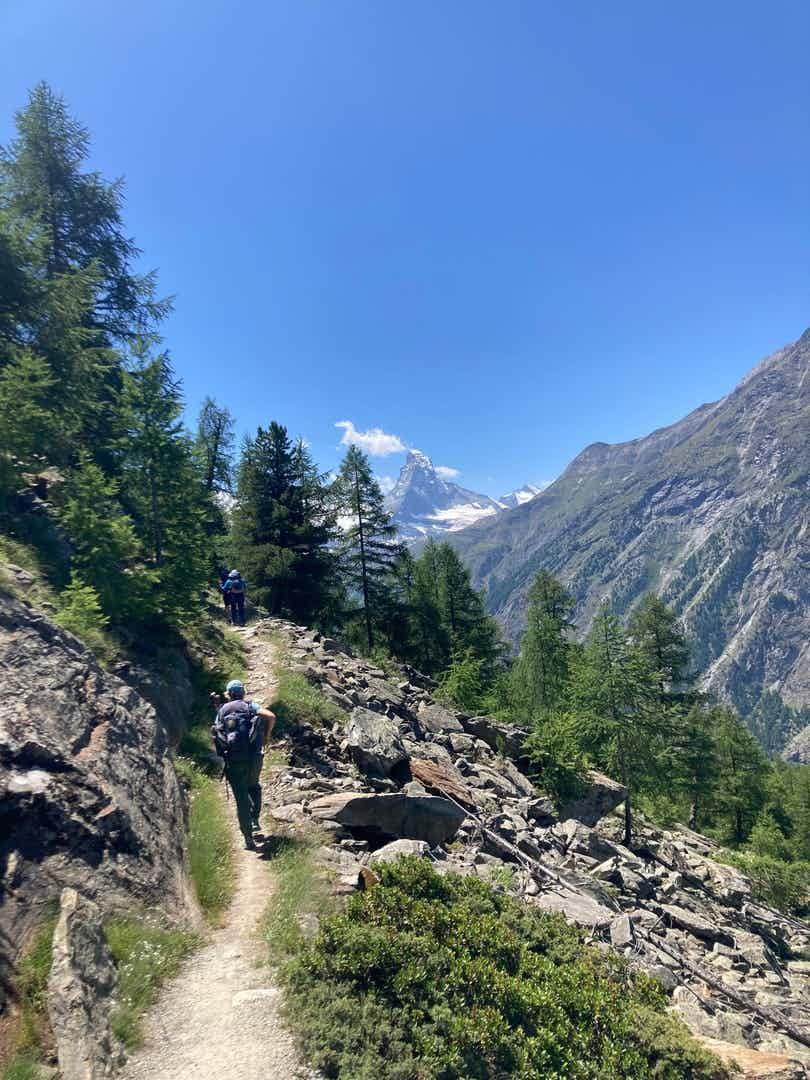
A really fantastic trip. A great group with excellent guide. It was tough, 155km over some difficult and exposed terrain, spectacular views and experiences, a great adventure. Recommend it highly to any fit, confident folks who like a challenge!
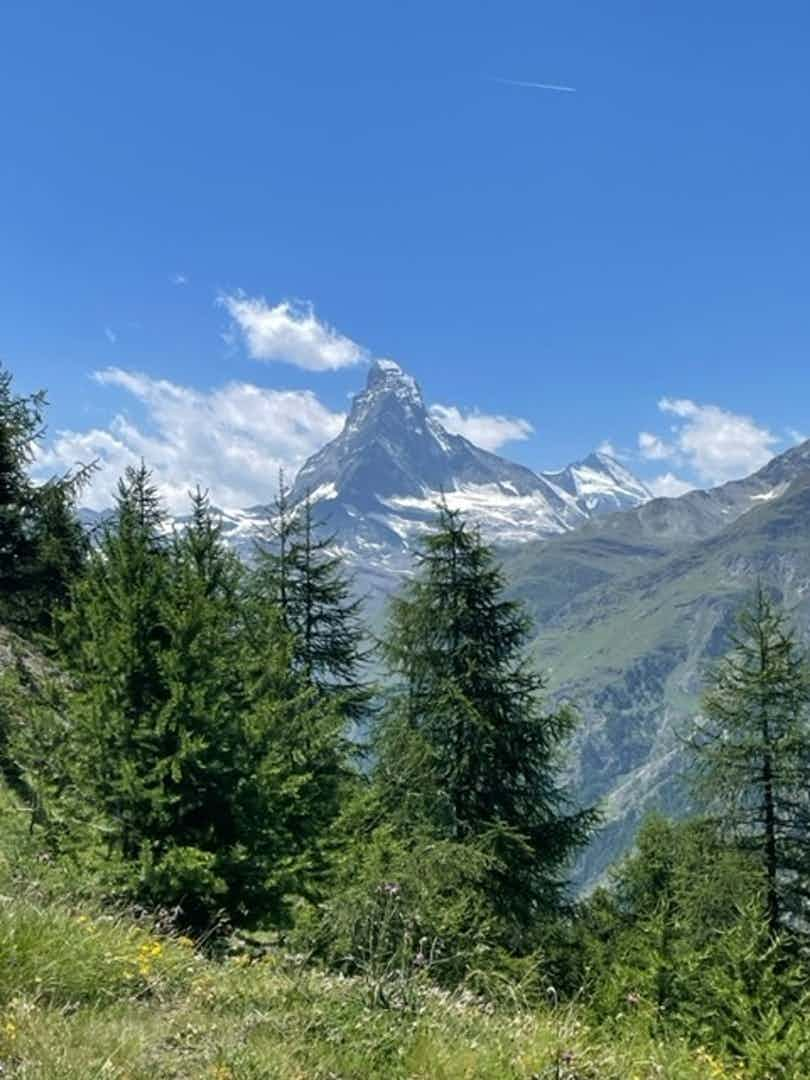
A rewarding hike with beautiful views that change each day! It is demanding but manageable with previous hiking experience, an excellent guide (thank you Alessandra!) and a great group. Good food and accommodation. Fantastic trip!
Great trip, would recommend. One tip, bring a swiss adapter. It's different to the euro ones!
Trip was fantastic, views incredible and the challenge was high. A few too many chicken curries for the 10 day hike though...
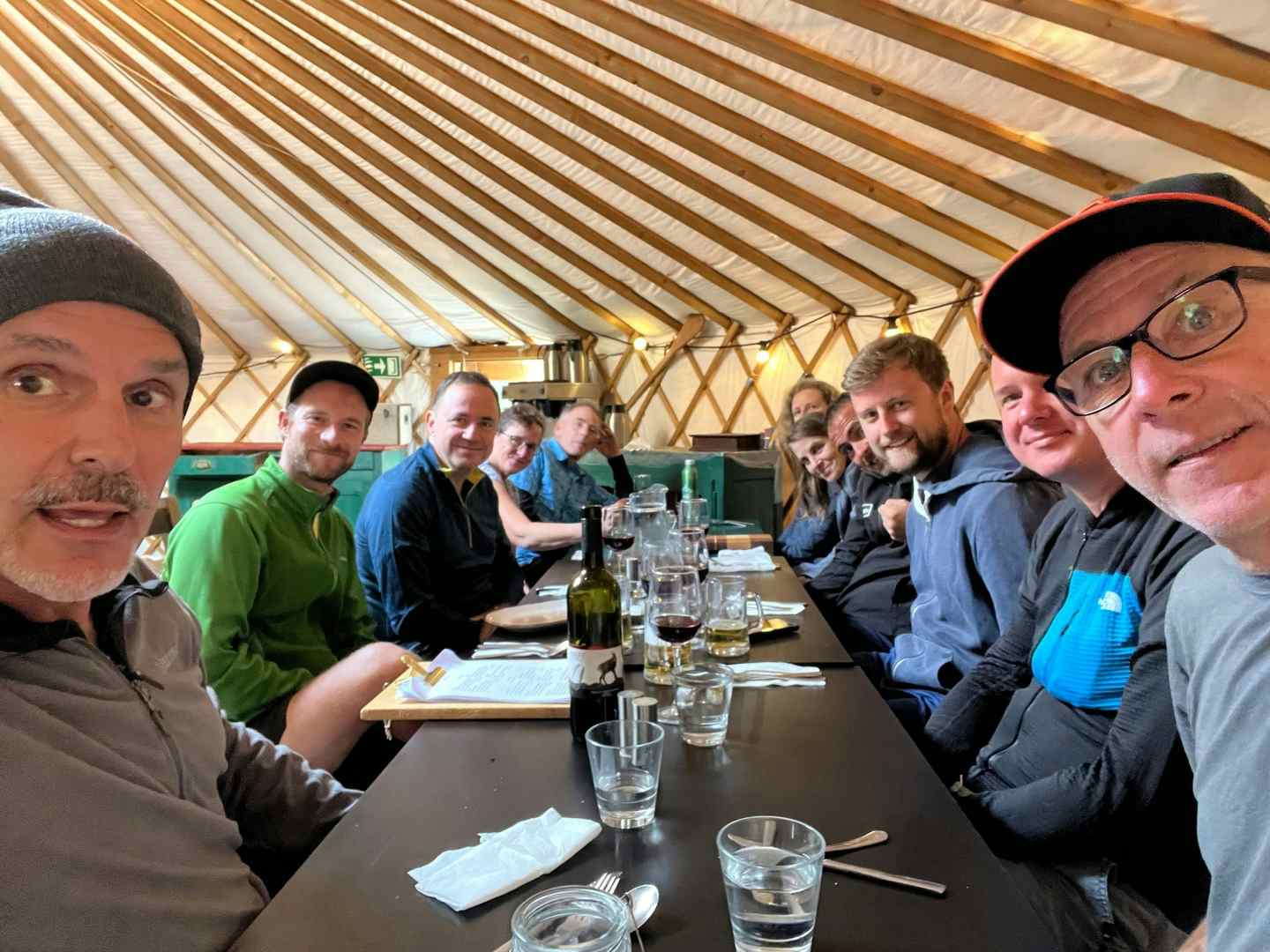
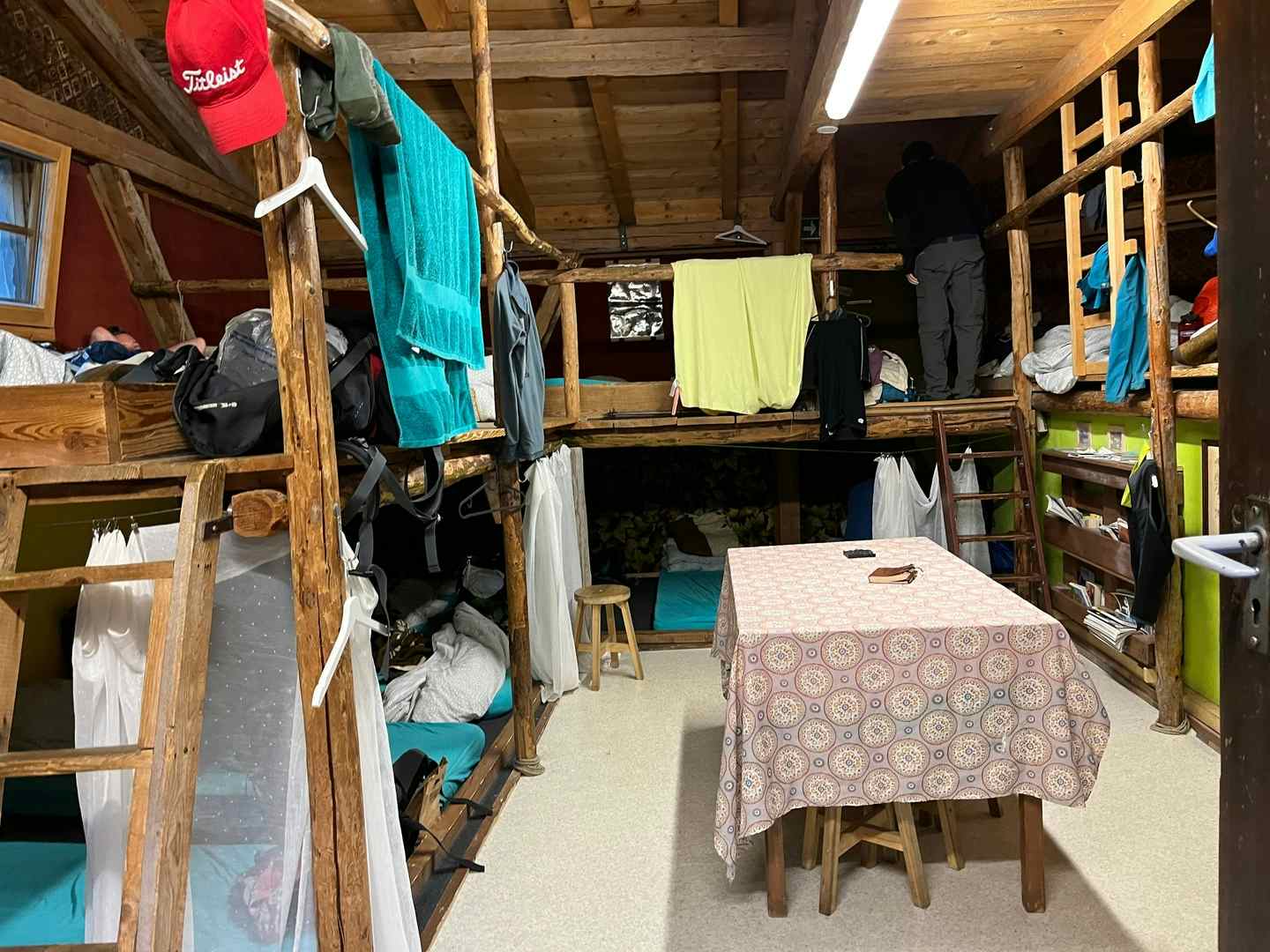
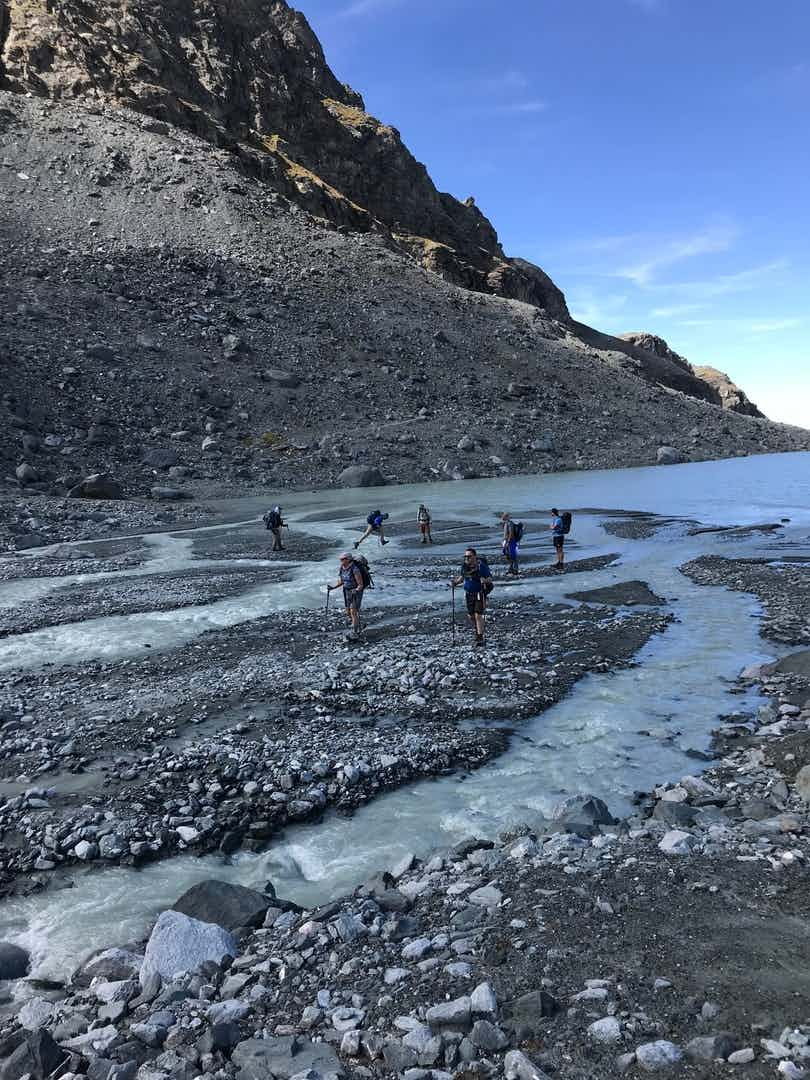
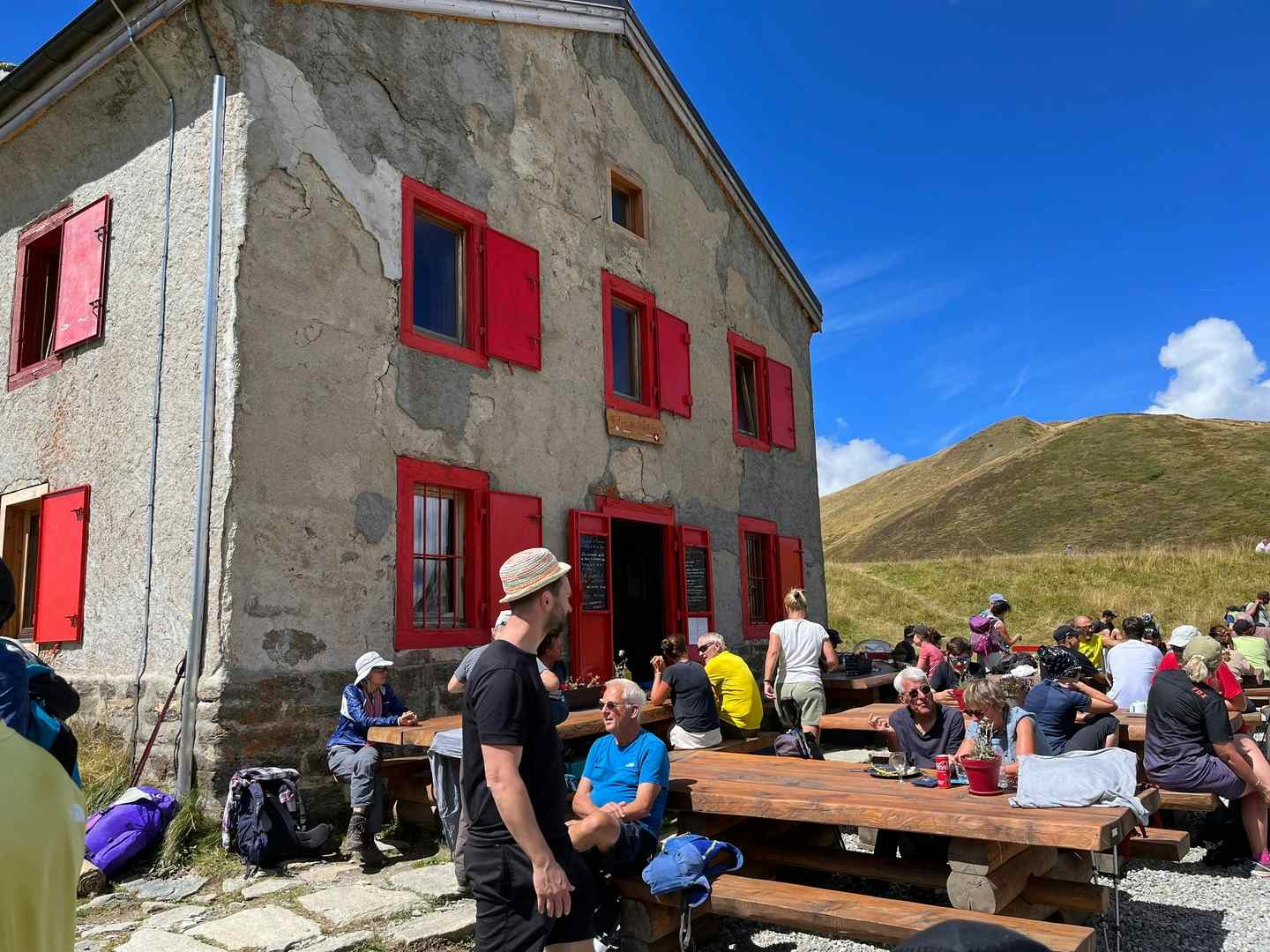
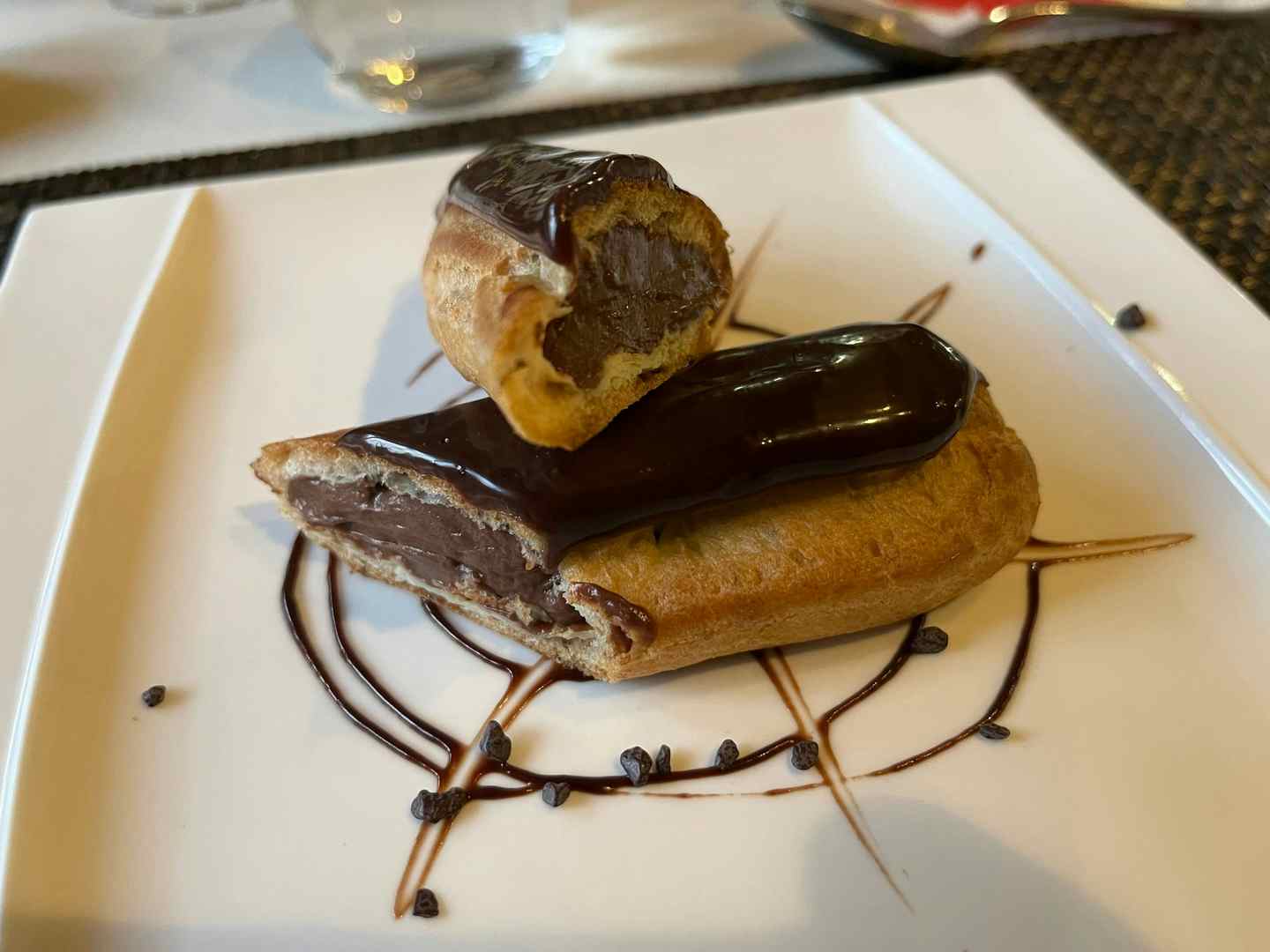
Nick Draper our guide was the best. He accommodated everyone in our group. He kept us informed through out the trip. He kept us on schedule while always being friendly. The views on the Haute Route were incredible. I felt as if I were in a new Yosemite Valley each day. The glaciers, waterfalls, streams, trails, …. Were all in incredible. The food and accommodations were excellent. This was the best vacation adventure I have ever had. I did train hard for this trip and the payoff was great. 100 miles in 10 days. And the trails were not easy but so proud to have completed. Thank you Muchbetteradventures! Sincerely, Dan
An amazing adventure which was seriously challenging but included wonderful scenery and a brilliant guide. For people who have strong ankles, who tolerate pain well and who enjoy chicken curry.
I cannot say much, because my body decided to stop me on the second day. Wonderful but hard route.
Everything was great.
Itinerary Activities
- 10 days of guided hiking along the Haute Route from Chamonix to Zermatt
Guides
- Expert, local, English-speaking IML certified guides (1:10 guide to customer ratio)
Accommodation
- 9 nights in guesthouses, B&Bs and mountain huts
Meals
All your meals are provided for the duration of the trip. This includes:
- 9 tasty breakfasts
- 10 picnic lunches
- 9 hearty dinners
Equipment
- Pillows and blankets are provided at the refuges
Our trips are hassle-free by design. We include all the activities and equipment, as well as many of the meals, so you can simply rock up with your rucksack and share the adventure with your new pals.
Travel to and from the trip
Our trips do not include flights, trains or other travel to the start point and back from the end point.
Airport transfers
This trip begins in Chamonix and ends in the car-free town of Zermatt, so you'll need to make your own way there from the airport – see the 'Getting There' section for more information.
Tips
Tips are not included in the trip cost; these are entirely at your discretion. If you would like to tip, the amount should be reflective of your perception of service and quality.
Personal Expenses
You know your own spending habits best, so please budget an appropriate amount for things like optional meals and drinks, shopping, optional activities, and laundry.
Travel insurance
Travel insurance is compulsory for all of our adventures and you are required to provide your policy information before departing. Your insurance should include adequate protection for overseas medical treatment, evacuation/repatriation, your baggage and equipment and the specific activities involved on your adventure. We also strongly recommend it includes cancellation and curtailment insurance, should you be unable to join your trip for specific reasons such as illness. Our recommended travel insurance provider is Campbell Irvine, as their insurance offers all of the above.
Visas
Visa requirements often change, and you are responsible for obtaining any required visas for this trip. Please check with your nearest embassy or consulate for up-to-date advice.
What's available to hire?
- Trekking poles (see Optional Extras for prices)
What do I need to bring?
You'll be carrying all you need for the ten day trip on your back, so don't over pack but also don't skip the essentials. Hiking in the Alps even in the peak of summer you can have very mixed conditions, both hot and cold, especially when climbing over the high mountain passes.
KIT
- 30-50L backpack with waist belt (plus a rain cover)
- A pack liner or dry bag is also good protection in case of rain
- Sleeping bag liner (cotton or silk). This is very important as it's a mandatory requirement at the mountain refuges. Pillows and blankets are provided by the refuges.
- Sunglasses and sunscreen (SPF 50+ recommended due to altitude)
- Preferred snacks for the trail
- Hydration/electrolyte tablets
- 2L water bottle(s)
- Hand sanitiser gel
- Toiletries and personal first aid items
- Towel
- Swim suit
- Earplugs and eye mask (recommended)
- Cash (CHF) for drinks, snacks along the trail, tips etc.
- Plug adaptor and/or battery pack to charge electrical devices (note Switzerland uses a different standard to the rest of Europe)
- Headlamp
CLOTHES
- Waterproof jacket (with hood) and trousers
- Primaloft or down jacket
- Fleece or merino pullover or sweater
- Synthetic or merino wool base layers
- Warm hat and gloves (really important in mixed weather conditions)
- Sunhat or cap
- Synthetic shirts and trousers (zip-off preferable) for hiking
- Comfortable shirt and trousers for the refuges
- 2+ pairs of hiking socks, wool or synthetic
- Sturdy hiking boots or shoes (worn in)
- Comfortable light shoes for around the refuge
Trekking Poles
Payable In Resort
Trekking Poles
… Per person
Luggage Transfer - Chamonix to Zermatt
Payable In Resort
Luggage Transfer - Chamonix to Zermatt
… Per person
We partner with the World Land Trust to ensure this trip achieves Net-Zero emissions. We also support their Buy an Acre programme, helping local communities to buy and protect natural habitats in perpetuity.
What's the number?
It works out on average at 148kg of CO2 emissions per person, including all local transport, accommodation, food, activities, guides, staff and office operations.
The only thing it doesn’t include right now is flights and travel to the destination. We do make an overall estimate across all our customers separately, but as we don’t book flights, have customers from all corners of the world, and no way of reliably knowing their travel plans, we simply can’t include an individual number in the figure on display here. We’ve got a goal to fix that, so that when you book, there is a way to measure and mitigate the carbon emitted by your flight too.
But what does the number mean?
Yep, hard to picture eh? To give you an idea:
- Driving 1000 miles/1609km would be approximately 281kg of CO2 in an average car (or 140.5kg per person, if there were two of you in it).
- A return economy class flight between London and New York would be approximately 1619kg (1.66 tonnes) per person.
- 10 trees in a temperate forest are estimated to remove approximately 250kg of CO2 from the air in a period of 5-10 years.
What are we doing about it?
Our trips are relatively low-carbon by design, and we're working with all our hosts to develop long term carbon reduction plans. We partner with the World Land Trust to ensure this trip achieves Net-Zero emissions. We also support their Buy an Acre programme, helping local communities to buy and protect natural habitats in perpetuity, ensuring the protection of the reserve and its wildlife.
Want to know more?
Amazingly, no international travel company has ever publicly published their carbon measurements before, as far as we know. We believe that must change, quickly. So we’re openly sharing the method we used in the hope that other companies will be able to more easily follow suit and build on what we've done so far. You'll find it all here.
There is the following option for those travelling with excess luggage:
For a €70 fee (payable locally) your host will collect it at Chamonix Sud Bus Station on Day 1 and transport it to Zermatt so it will be waiting for you when you finish the trek.
Please let your host know in advance if you'd like to take up either service option so they can be prepared. You'll be carrying your own gear during the trek so we recommend packing light but not skimping on the essentials. See the Kit List section for advice on what to pack.
For this itinerary there is one guide per 10 hikers. The guides this host works with are all International Mountain Leader certified (as a minimum), First Aid trained and are highly experienced and leading groups in the Alps.
This trip visits locations at or above 2500m, where some people may experience symptoms of Altitude Sickness, also known as Acute Mountain Sickness (AMS).
Previous experience at altitude doesn’t guarantee the same response again – your body can react differently on each trip. However, having been at altitude before is still valuable: it gives you a better understanding of how your body might respond, what symptoms to look out for, and how to manage your pace and energy levels.
Your guide is trained to manage the risk of altitude sickness by controlling the rate of ascent, monitoring group wellbeing, and responding appropriately if anyone feels unwell.
Before booking, we recommend considering your personal health, particularly if you have any pre-existing conditions, and consulting a medical professional if you’re unsure. Arriving early to allow your body to acclimatise can also make a big difference.
Your travel insurance must cover the maximum altitude reached on this trip and include emergency evacuation.
Sure can! Over 70% of our travellers travel solo, it’s a great way to meet like-minded people.
Our team of Adventure Hunters co-create exclusive adventures which are run by highly vetted, specialist hosts. The trip is run by our trusted host partner in the destination. We only work with independent, local, in-destination experts who know the very best places to explore and how to stay safe. Read more information about the local teams we partner with. You’ll be introduced to the host straight after making a booking via the Much Better Adventures platform.
Much Better Adventures refer to the UK Government’s official travel advice when designing trips and monitoring trip operations. We recommend that all customers are familiar with the practical information provided on the Government’s FCDO website, where current travel advice can be found by searching for the applicable destination(s).
For customers joining this trip from other international destinations – please also read the official travel advice applicable to your country of residence/origin, as this may differ.
We recommend checking out the country-specific information and also talking to a travel nurse.
We automatically convert prices from the local currency that a host receives to your chosen currency. We update our exchange rates on a daily basis so this does mean that prices displayed on the site are subject to currency fluctuations, which is why you may see them change over time.
If you wish to change the currency you pay in, head to the bottom of the page.
All of our group adventures are specially designed for adults to enjoy as we want these adventures to bring together outdoorsy people who are truly like-minded. You must be over 18 to join one of our trips.
You're always in good company on one of our adventures.
Our trips are typically made up of a mixture of solo travellers and small groups of 2 or 3 friends, with most in their 30s-50s.
Our sociable adventures are solo-friendly by design and naturally attract outdoorsy people with a shared mindset; a love for adventure, a desire to push themselves and meet awesome, like-minded people along the way.
It’s this camaraderie that has so often turned a great adventure into a life-changing one.
Don't just take our word for it:
- 95% of people rate the group dynamics on our trips 5/5
- 90% of people recommend joining a trip to make new friends
- 75% of people have met people on our trips that they would now consider friends
See here for more info about the Much Better Adventures tribe.
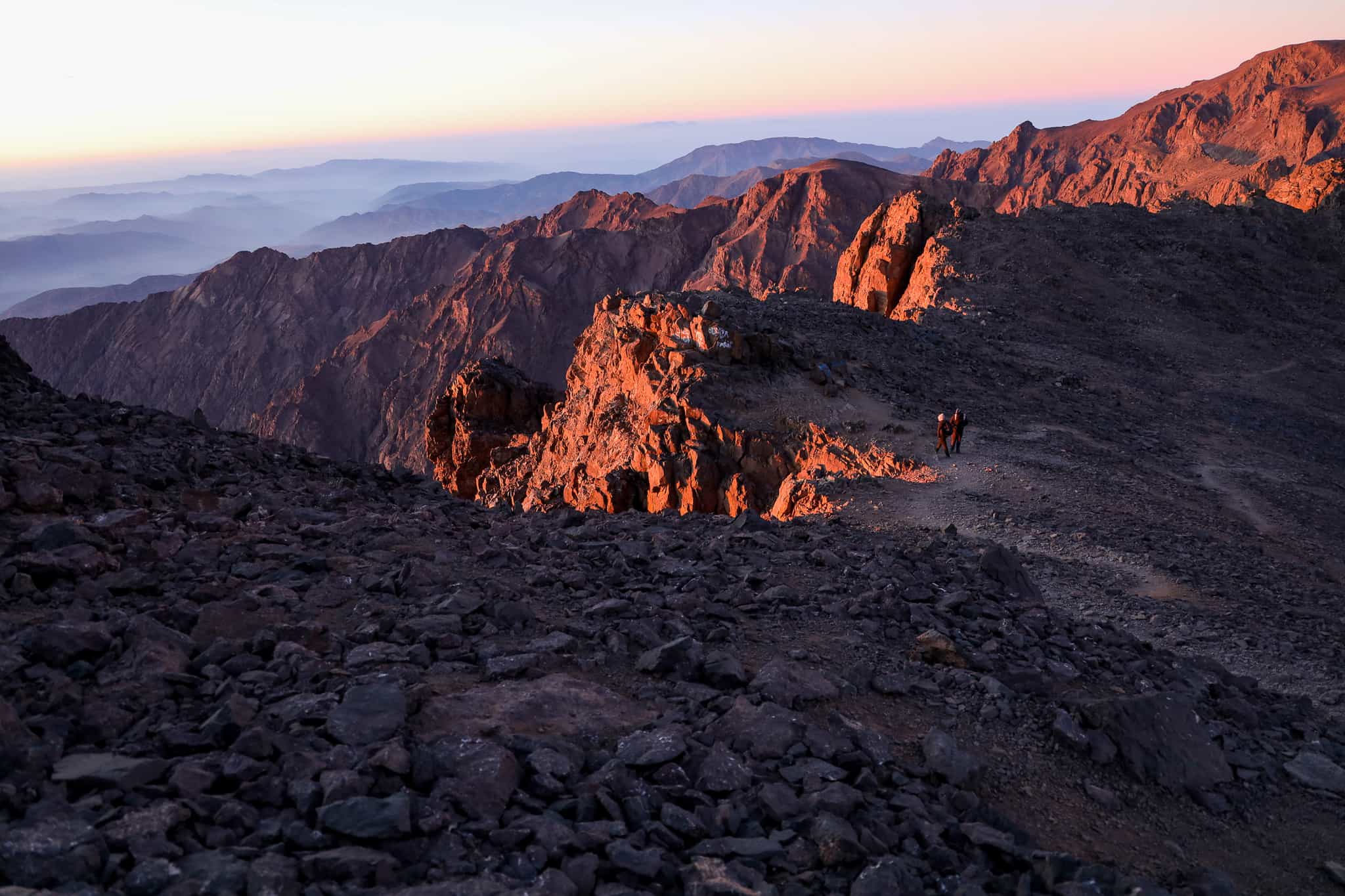
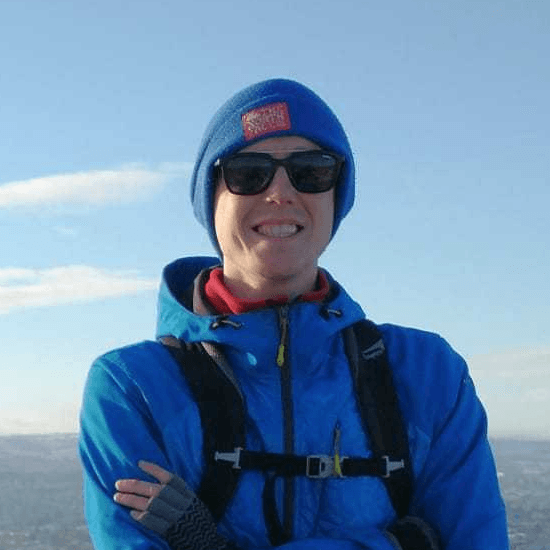
Need help finding flights?
From logistics and how to get there, to fitness, group dynamic and trip difficulty, Rory and his team of friendly experts are on hand to help.
We've got your back
Guaranteed to run
All Much Better Adventures trips are now guaranteed to run. Once you’ve booked your spot you can immediately make your travel arrangements, no uncertainty, no hanging about (excludes 'request to book' departures). Full details
Flexible payments
Secure your spot with the minimum deposit and pay off the remaining balance in as many instalments as you like, with no interest or fees. Full details
Happiness Guarantee
We’re so confident you’ll have an amazing time we’ll put our money on it. Full details
Full financial protection
To give you complete peace of mind Much Better Adventures is backed by ABTOT, ABTA and ATOL memberships. Full details
Tried & Trusted
Much Better Adventures is rated ‘Excellent’ on Trustpilot with over 1000 verified trip reviews averaging 4.8/5.
Connect before you go
You'll be invited to join a WhatsApp group to get to know each other before your big adventure together. Full details
DEPARTURE DATES
Sunday 27th July 2025
to Tuesday 5th August 2025
Fully Booked
